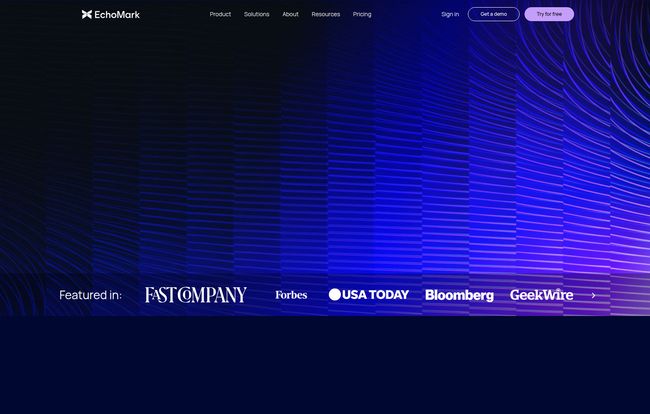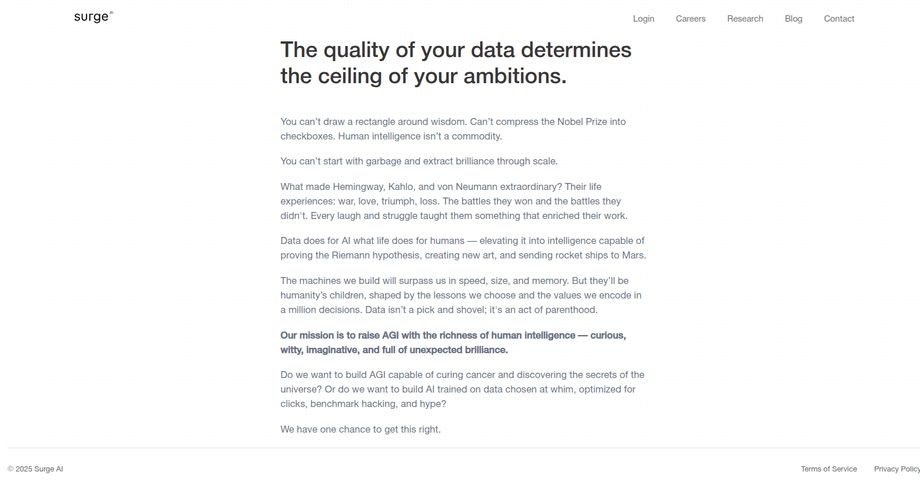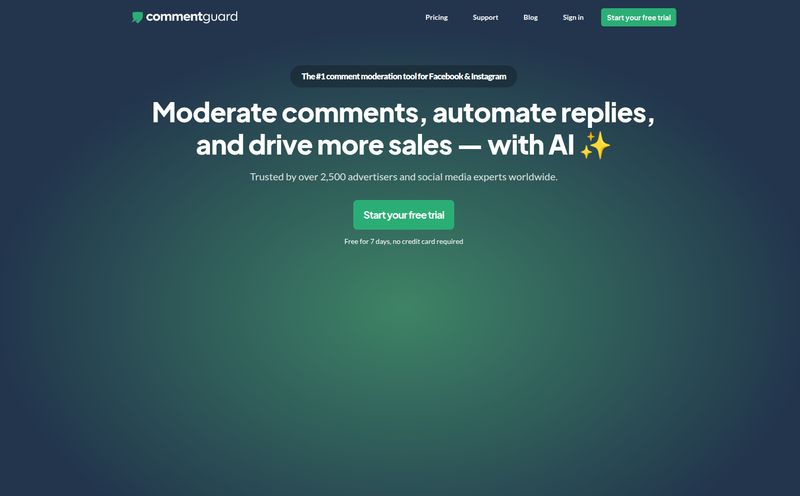We’ve all felt that jolt of panic. You hit ‘send’ on an email with a sensitive attachment—a draft press release, a financial projection, a client proposal—and for a split second, your brain screams, "Did I send that to the right person?"
For years, the SEO and digital marketing world has been obsessed with external threats. Firewalls, anti-malware, zero-trust architecture... we build digital fortresses to keep the bad guys out. But what about the threats that are already inside? The accidental forward, the disgruntled employee, the simple human error. That’s a whole different ball game, isn't it.
I’ve been tracking trends in data security for a while, and most solutions feel like bigger, thicker walls. That's why when I stumbled upon EchoMark, my interest was piqued. It's not another wall. It’s something else entirely. Think of it less like a big, ugly watermark slapped across a photo and more like a document's unique DNA, woven invisibly into the very fabric of the file. Its a powerful idea.
So, What on Earth is EchoMark?
In a nutshell, EchoMark is a data leak prevention platform that uses invisible forensic watermarks to protect your stuff. We’re talking documents, images, and even the text in your emails. When you share a file using EchoMark, it embeds a unique, imperceptible identifier for each recipient.
If that document ever shows up where it shouldn't—say, on a competitor's desk or a news site—you can use EchoMark to scan it and find out exactly whose copy it was. The game of "who dunnit?" is over before it even begins. It's a shift from prevention to accountability, which in my experience, is a much stronger deterrent.
While they serve big players in government and defense, they also have options for the rest of us who are just trying to protect our intellectual property without having a Pentagon-sized budget.
The Core Features That Actually Matter
A feature list is just a list. What matters is what it does for you when the chips are down. So let's break down the important bits.
Forensic Watermarking: The Secret Sauce
This is the main event. The technology behind EchoMark’s invisible watermarks is the star of the show. It’s not just one type of mark; they claim to use a combination of techniques to make the watermarks resilient. This means even if someone tries to screenshot it, print it, or convert the file format, the watermark is designed to stick around. It's persistent. It’s stubborn. And when it comes to security, stubborn is good.
Playing Detective with Leak Investigation Tools
Here's the payoff. A leak happens. You're in crisis mode. Instead of launching a company-wide witch hunt, you just take the leaked file (or even a photo of it), upload it to EchoMark, and it tells you the source. That’s it. It turns a multi-week internal investigation into a task you can do in minutes. This is about speed and certainty, two things you desperately need in a data breach scenario.
Beyond Watermarks: Secure Sharing and Integrations
A security tool that messes up your workflow is a tool that won't get used. The EchoMark team seems to get this. For their Enterprise clients, the platform integrates directly into the tools your team already uses: Microsoft Outlook and Google Workspace. You can send an EchoMarked email or attachment without leaving your inbox. That low-friction approach is critical for adoption.
For us solo operators or smaller teams, there’s a web app that handles the secure sharing and storage. Plus, for the developers in the room, there's an API, which opens up all sorts of possibilities for custom integrations.

Visit EchoMark
Let's Talk Turkey: EchoMark Pricing and Plans
Alright, let's get to the question on everyone's mind: what's this going to cost me? EchoMark has a pretty straightforward two-tier system.
| Feature | Individual Plan | Enterprise Plan |
|---|---|---|
| Price | $19.99 / month | Let's Talk (Custom) |
| Core Use | Share from EchoMark.com | Share from Outlook & Gmail |
| Leak Investigation | For your personal info | On behalf of entire org |
| Custom Branding | ❌ | ✅ |
| AI Repraising for Email | ❌ | ✅ |
| MFA / SAML Security | ✅ (MFA) | ✅ (MFA & SAML) |
The Individual Plan at $19.99 a month is pretty compelling for freelancers, journalists, or consultants. You get the core functionality—invisible watermarking and leak investigation—with 100GB of storage. The main tradeoff is you have to manage everything through their web app, not your native email client.
The Enterprise Plan is a different beast. It's the classic "Let's talk" model, which means the pricing is custom based on your organization's size and needs. This tier unlocks the killer features: the Outlook and Gmail integrations, organization-wide policy management, and the ability to investigate leaks on behalf of any user. This is the one for businesses who are serious about plugging internal leaks.
My Honest Take: The Good, The Bad, and The "It Depends"
After digging through their site and features, here's my unfiltered take. No tool is perfect, but EchoMark gets a lot of things right.
The best thing, hands down, is that the watermarks are invisible. It doesn't disrupt workflows or make documents look ugly. People can work with the files like they always have, completely unaware that there’s a sophisticated tracking system under the hood. The detailed analytics on who viewed what are also incredibly valuable, even before a leak happens. It gives you a clear audit trail.
Now, for the critiques. Honestly, the "Contact Sales" for Enterprise pricing always grinds my gears a little. As someone who has to budget for tools constantly, I prefer transparency. But I get it; enterprise deals are complex. It's standard practice, just a pet peeve of mine. Also, the Individual plan is great, but you can definitely feel the pull toward the Enterprise tier with the features they hold back, like the email integrations.
The one point of friction I can see is that recipients need to verify their email to access a file securely. From a security standpoint, this is 100% the right move. You have to verify the recipient to make the watermark meaningful. But it does add an extra step for the person on the other end. It’s a small price to pay for this level of security, but something to be aware of.
Who is EchoMark Really For?
So, should you get it?
If you're a law firm sharing discovery documents, an M&A advisor handling deal sheets, a biotech company protecting research, or a marketing agency sharing a pre-launch campaign with a client, the answer is a resounding yes. The Enterprise plan feels tailor-made for these use cases where the cost of a leak is astronomical.
If you're a high-level consultant, freelancer, or journalist, the Individual plan is a very affordable insurance policy. For twenty bucks a month, you get the kind of protection that was previously only available to massive corporations.
Is it overkill for sharing your fantasy football draft results? Probably. But for any document that makes you think twice before hitting send, EchoMark provides a layer of accountability that I haven't seen executed this elegantly before.
At the end of the day, EchoMark is playing psychological warfare, and I mean that in the best way possible. When people know that every document is uniquely traceable back to them, their behavior changes. It’s a powerful deterrent. It’s not about catching the leaker after the fact—though it does that brilliantly. It’s about creating a culture of caution and accountability that prevents the leak from ever happening in the first place.
Frequently Asked Questions about EchoMark
- 1. How does invisible watermarking even work?
- Think of it like slight, imperceptible changes to the spacing of letters or the color values of pixels in an image. These changes are invisible to the human eye but create a unique pattern that a computer can read. Each recipient gets a slightly different pattern, linking the file directly to them.
- 2. Is EchoMark difficult to set up?
- For individuals, it's as simple as signing up for the web app. For businesses on the Enterprise plan, the setup involves integrating with your existing email system (Outlook or Google Workspace). This is a more involved process but means your team can use it without changing their daily habits.
- 3. Can the watermarks be removed?
- They are designed to be extremely difficult to remove. EchoMark uses multiple layers of watermarking to ensure that even if a document is printed, scanned, screenshotted, or compressed, the forensic identifiers remain intact and recoverable.
- 4. Is EchoMark just for big companies?
- Not at all. While the Enterprise plan is built for larger organizations, the Individual plan at $19.99/month makes this technology accessible to freelancers, consultants, and small business owners who handle sensitive information.
- 5. What kind of files can I protect with EchoMark?
- EchoMark supports common business documents (like PDFs and Microsoft Office files), images, and the text content of your emails themselves. The goal is to cover the primary ways sensitive information is shared in a business context.



